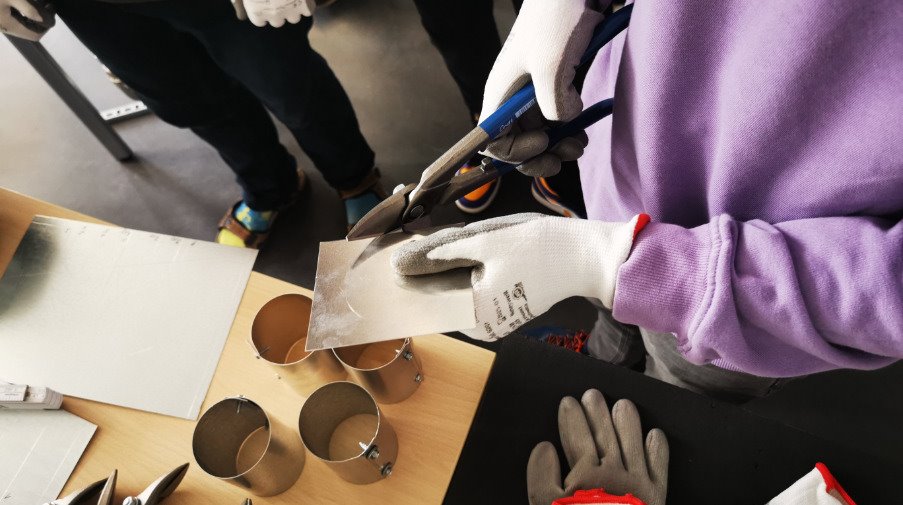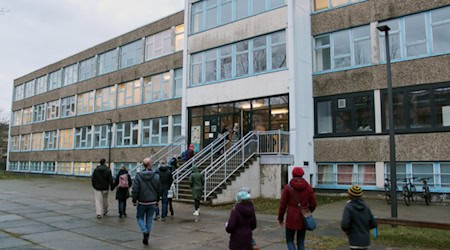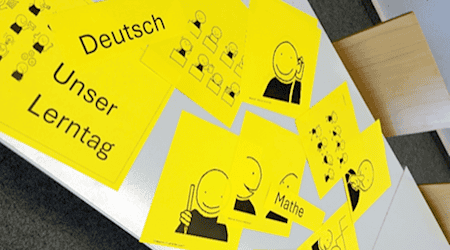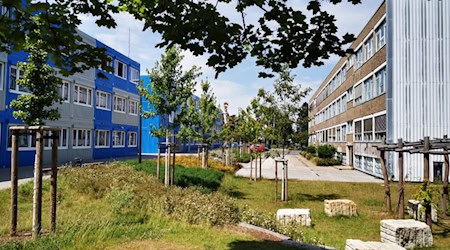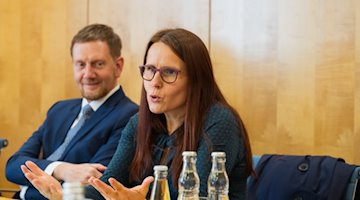At Dresden University School, 720 students have started the new school year. As in previous years, the size of the school community not only changes with each new school year, but further building blocks of the school concept are implemented. In the 2023/24 school year, this is particularly the early career orientation with the PRALL project and the continuation of the youth school in the Old Brickworks in Prohlis. The first grades for grade 9 and integration of Ukrainian children and young people into the student body are also on the agenda.
Intensive career orientation with PRALL
Learning with a connection to life and the world of work is a building block firmly anchored in the school concept and serves early career orientation. In the PRALL project, students in grades 7 and 8 go to a Dresden company every Friday. Here, under the guidance of trainees among others, they gain an insight into various trades and fields of business. They learned about possible internship locations at a company exchange in April at the University School Dresden.
They bring topics and observations from their everyday working lives into the project work and the learning workshops at school. In this way, the young people develop practice-related research questions and help shape their learning path from these questions.
The regular two-week company internship can be individually designed by the university school due to its status as a school experiment of the TU Dresden, so that it does not take place in one piece, but on one day per week. Already in the school year 2022/23, the students of grade 7 completed an internship year with weekly company visits.
Digit grades for ninth graders
Following the requirements of the Saxon Ministry of Education, there are for the first time again numerical grades for the Schüler:innen of grade 9, in addition to individual feedback on their learning progress and skills development. Since the 2019/20 school year, children and young people have been learning without grades up to grade 9. In this context, the report cards formulate as a development and learning report which learning content and skills the students have already mastered and to what depth. In regular development and feedback meetings, the children and adolescents, supported by the learning guides, set concrete goals and reflect on how well they succeed in implementing them, and which factors can support and hinder them.
Integration of Ukrainian students
The students, who have been learning in two Ukrainian classes at Dresden University School since August 2022, are now being integrated step by step into the core groups and the regular daily learning routine. Initially, the young people are free to participate in the studio work and sports activities in the mornings. In the studios they can focus on languages, natural and social sciences or art and music. Afterwards, they will continue to be supported by Ukrainian DAZ teachers in language acquisition and learning. The University School Dresden follows the concept of the Free State of Saxony for students with German as a second language (DaZ).
Learning until the Abitur - Growing school meets spatial limits
When the first Abitur exams are taken at the University Community School in the school year 2026/27, about 1,000 students will learn here. Already in the coming school year 2024/25, the first young people will leave the school with the Mittlere Reife. Since the start in the 2019/20 school year with 200 students in grades 1, 2, 3 and 5, the school community has been growing every year by three class sizes of new students.
Even before the school opened at the Cämmerswalder Straße site, it was known that the building from GDR times could not accommodate the growing student body. Currently, the high school students and the DaZ classes learn here. The elementary and middle school are now learning for the second year in the mobile room units, which with their modular system offer a more flexible room design for a "school of the future".
Unfortunately, the school garden had to make way for the construction of the container building. Also missing is a second cabinet for science and the structural condition of the gymnasium is desolate. After the Ukrainian classes at the Höckendorfer Weg site have moved out, the school community now hopes that the reconstruction will begin soon.
ForUS research center on the school experiment is growing
The research center on the school experiment, which was established at the TU Dresden in 2021, is also growing. Since the summer semester, four research assistants have been investigating how cooperative, self-regulated learning can be implemented with digital support. This temporary increase in staff is made possible by funding from the Free State of Saxony and the Sächsische Aufbaubank as part of the TG70 funding.
About the University School Dresden
The University School Dresden is a joint project of the state capital Dresden and the Technical University. It is a public and free primary and secondary school under municipal sponsorship, where innovative forms of teaching and learning are tested under scientific supervision. It is also a training school for future teachers and, in the future, a further education school for teachers. The school experiment is scientifically accompanied by the research center ForUS at the TU Dresden.
Information on the research project at the TU Dresden: https://tu-dresden.de/gsw/unischule
Information on the University School Dresden: http://universitaetsschule.org
Registration for the open day on Jan. 22, 2021: in the calendar on the school website
On various social media channels you can find insights into everyday school life and the research project under @unischuleTUD. Follow the links to Dresden University School on Facebook, Twitter, Instagram, YouTubeand LinkedIn.

